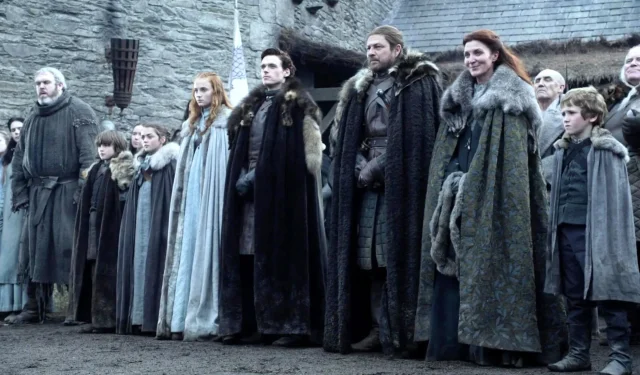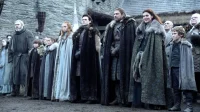Sean Bean: Embracing On-Screen Deaths
- Renowned for portraying characters that face grim endings, Sean Bean values depth over survival in his roles.
- While viral memes highlight his frequent deaths on screen, they overlook his impactful survival performances.
- Bean recognizes the significance of his characters’ demises but expresses little concern, focusing instead on his own life.
Sean Bean, a celebrated actor best known for his roles in Game of Thrones, has garnered a reputation for the tragic fates of his characters. His ability to evoke strong emotions through these deaths has inspired a plethora of memes, yet his recent comments reveal a fresh perspective on the discussion.
Character deaths serve a critical purpose in storytelling, often enhancing emotional engagement and facilitating plot advancement. For example, horror franchises like Scream regularly feature shocking deaths in their openings to captivate audiences. Similarly, pivotal moments in superhero narratives, such as Uncle Ben’s death in Spider-Man or the murder of Bruce Wayne’s parents, drive character development and motivate the hero’s journey. While these deaths can shock the audience, they often contribute to a deeper narrative progression.
Sean Bean, who has brought to life numerous memorable characters, is notorious for their untimely demises, having portrayed at least 15 characters who meet gruesome ends. This trend has led to jokes among fans that he intentionally avoids roles where his character survives. In a recent interview with Radio Times, wherein he promoted his latest BBC crime drama This City is Ours, Bean reflected on the phenomenon of his characters’ deaths. He conveyed his thoughts succinctly:
I realised there were quite a lot of deaths without anybody needing to tell me. It was obvious. But I was playing some great characters, juicy, nasty pieces of work, and I thought I’d rather play them and die than play a mundane character that lives.
Bean’s characters are often met with brutal endings. For example, in War Requiem (1989), his character is mercilessly stabbed with a bayonet, while in Goldeneye (1995), he meets his fate at the hands of a falling satellite. His portrayal of Boromir in The Lord of the Rings: The Fellowship of the Ring (2001) culminated in a heroic but fatal stand against overwhelming odds. Lastly, in Game of Thrones (2011), he switched from hero to tragic figure as Ned Stark, whose beheading shocked fans worldwide. Despite feeling the impact of these viral memes at times, Bean has come to embrace his fate as an actor. He humorously noted, “Maybe I should stop dying as much,”yet ultimately recognized that the demise of his characters serves a narrative purpose. As he quipped, “And, you know, I’m not really dead!“
While fans may label him as the actor who perpetually meets his end, this perception does not encompass his entire body of work. Bean has also vividly portrayed characters who survive, including roles in The Martian, National Treasure, and Troy. His ability to create compelling characters, even those sentenced to die, showcases the effectiveness of his craft. The enduring conversation and memes surrounding his roles highlight their impact in popular culture, confirming that even tragic characters can leave a lasting impression. Had he chosen safer, less engaging roles, he likely would not have captured the audience’s attention as he has.
As Bean continues his artistic journey, he should find comfort in knowing that the memes and discussions surrounding his work are a testament to his prowess as an actor, further solidifying his legacy in the entertainment industry.
Source: Radio Times


